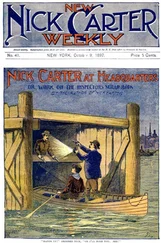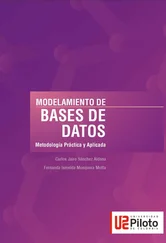Seen in one respect, the DTOs are an expression of the immigrant labor force as it was successfully portrayed by defense lawyers in the 2001 Tyson case—virtually invisible and nearly impossible to follow. Lori Arnold’s description of the reality of many illegal immigrants at the Excel plant—using fake identification, moving from town to town and packing plant to packing plant—sounded a lot like meth’s trajectory around the country as I tried to trace it back in 1999: there, but never quite visible.
According to a Pew Hispanic Center report in 2005, there are twelve million illegal immigrants in the United States. Eight hundred and fifty thousand more arrive every year, the report found, along with the fact that 25 percent of all agricultural jobs in the United States are done by illegal immigrants. The link between the agricultural business, meatpacking, and illegal immigration would appear to be self-evident. As University of Missouri sociologist William Heffernan says, “Cracking down on illegal immigration would cripple the [food production] system.” What also appears to be true is that the DTOs employ a miniscule percentage of the illegal immigrants in this country. Ironically, that fractional number is harder still to police within an ever-expanding multitude of people that is overwhelmingly law-abiding.
But there’s also a more subtle connection between meth, immigration, and the food industry. That relationship is driven by the conceit that drugs, like viruses, attack weak hosts. Or, to put it another way, narcotics and poverty—along with the loss of hope and place that Clay Hallberg has described—mutually reinforce one another.
Consider what used to happen in Oelwein, Iowa, before the large-scale consolidation in the 1980s and ’90s of almost every niche of the food-production chain. Corn farmers, such as James and Donna Lein, would have bought seed from the local seed company. Once harvested, that corn would go to a grain elevator, also locally owned. It would be shipped to a small feedlot in order to fatten cattle raised in Nebraska, Wyoming, Florida, or Arizona; or perhaps it would go to a dairy in northern Missouri, a chicken farm in Indiana, or a pork outfit in Kansas. The variables were infinite, and the market was dynamic. The barge, truck, or railroad car that carried the grain was likely independently owned, too, as would have been the pigs, cows, and chickens it fed. At each stage, the price would have to be “discovered” as multiple potential customers vied to handle the product, with competition keeping the price “true,” or fair, in the context of the marketplace.
Eventually, the Oelwein corn used to feed sows in Topeka might return to Oelwein in the form of hocks to be disassembled, packaged, and shipped at the Iowa Ham plant by people like Roland Jarvis. From there, a whole new market, just as complex and multifaceted, would take over in order to distribute the food and sell it at a retail level, perhaps at the grocery once owned by the Leo family (which today is an IGA). James and Donna Lein would have been the essential building blocks in a vibrant system in which the variables contributed at all stages to what’s called the “social capital” of rural communities. In circulatory terms, there was blood flow even in the capillaries.
Beginning with the precedent set in 1987 with the IBP takeover of Hormel in Ottumwa—and the subsequent takeover of Iowa Ham by Gillette—a few companies would come to control most of the U.S. food business. Today, according to sociologists like Heffernan, the dynamism essential to the marketplace has been lost because there is no longer a multifaceted context. Price discovery no longer happens; the value chain is controlled by a limited number of entities. Seed is not sold; it’s biogenetically engineered by companies like Monsanto, which entered a joint venture with Cargill in 1998. Cargill—not the farmer—owns the corn that is grown, too, because it’s more than likely that the farmer, who would once have chosen a buyer for his crop, has been contracted to sell only to Cargill. In the Illinois and Ohio river valleys, Cargill owns 50 percent of the grain elevators and other storage facilities. Along with Tyson, Swift and Co., and the National Beef Packing Company, Cargill owns 83.5 percent of the beef packing industry. Cargill, Hormel, ConAgra, and Carolina Turkey own 51 percent of turkey production and packing. Cargill is number one in flour milling; number two in ethanol production and in animal feed plants, producing nine million tons a year; and number three in soybean crushing. If you are a corn farmer almost anywhere from Pennsylvania to Iowa, you are likely to work for Cargill in at least one of several ways. Even in places like Fayette County, Iowa, where Cargill’s presence is implicit rather than explicit, family farms must grow to an enormous size in order to compete. This squeezes out all but the heartiest souls, like the Leins, who care enough about their way of life to essentially take a vow of poverty.
Douglas Constance characterizes the changes in rural America in terms of Karl Marx’s critique of the theory of political economy posited by Adam Smith. With many buyers and many sellers, says Constance, there is perfect competition and no need for government intervention. Smith’s “invisible hand of capitalism” works, in theory, to effect the highest amount of economic blood flow at all levels. In reality, says Constance, Marx’s countertheory has unfortunately proved more insightful. Strapped with the mandate to “grow or die,” businesses are encouraged to cannibalize competition until there are no longer many buyers and many sellers, but rather, many buyers and an increasingly limited number of sellers. The flow of capital is dammed up. Once competition has been annihilated, Constance says, the surviving companies, like Cargill, begin to effect political decisions through their enormous lobbying capabilities. The government no longer governs unimpeded: it does so in tandem with the major companies, just as Marx predicted. It was less than a century ago that Teddy Roosevelt made his reputation by “busting up the trusts” that had become too powerful. Those “trusts,” not coincidentally, were in large part the industrial meat-packers of the early twentieth century.
The ability to influence the governmental decision-making process is something the U.S. food and pharmaceutical industries share with the five Mexican DTOs. The two catchphrases repeated by John McCain and Barack Obama in the lead-up to the 2008 presidential election were “earmarks” and “pork barrel spending.” Both expressions are, like the “trusts” of Roosevelt’s time, meant to imply the depth and unhealthiness of the relationship between the federal government and major corporations, be they in the food, the oil, or the defense industry.
One former DEA official who spent eight years in Mexico told me that the DTOs—because of their wealth, their propensity for violence, and the sheer numbers of people they employ both directly and indirectly—have potentially more lobbying power than any legal business in that nation. Fortunately, the comparison between the traffickers’ and the food industry’s ability to sway government ends with the ungovernable violence that accompanies attempts by Mexico City to curtail the drug trade. Unfortunately, the same American immigration policy that provides a low-wage workforce ideal for the food industry is what keeps the DTOs in business. That’s to say that the DTOs do not directly influence the U.S. government. There is no earmarking for the Arellano Felix Organization (AFO) or the Gulf Cartel. But by directly influencing the Mexican government, the AFO and the Gulf Cartel, along with the other three DTOs, do in fact play a role in U.S. politics, for the interests of the DTOs are aligned with those of the likes of Cargill and ADM. So, too, are the interests of the DTOs served by unrestricted free trade, which has been a common priority of both governments at least since NAFTA. A key component of George W. Bush’s first victory, in 2000, was his appeal to Mexican Americans, which he engineered in part by appearing with then-president Vicente Fox of Mexico to appeal for a more open border. In the five trafficking capitals, from Tijuana to Matamoros, there must have been dancing in the streets.
Читать дальше












